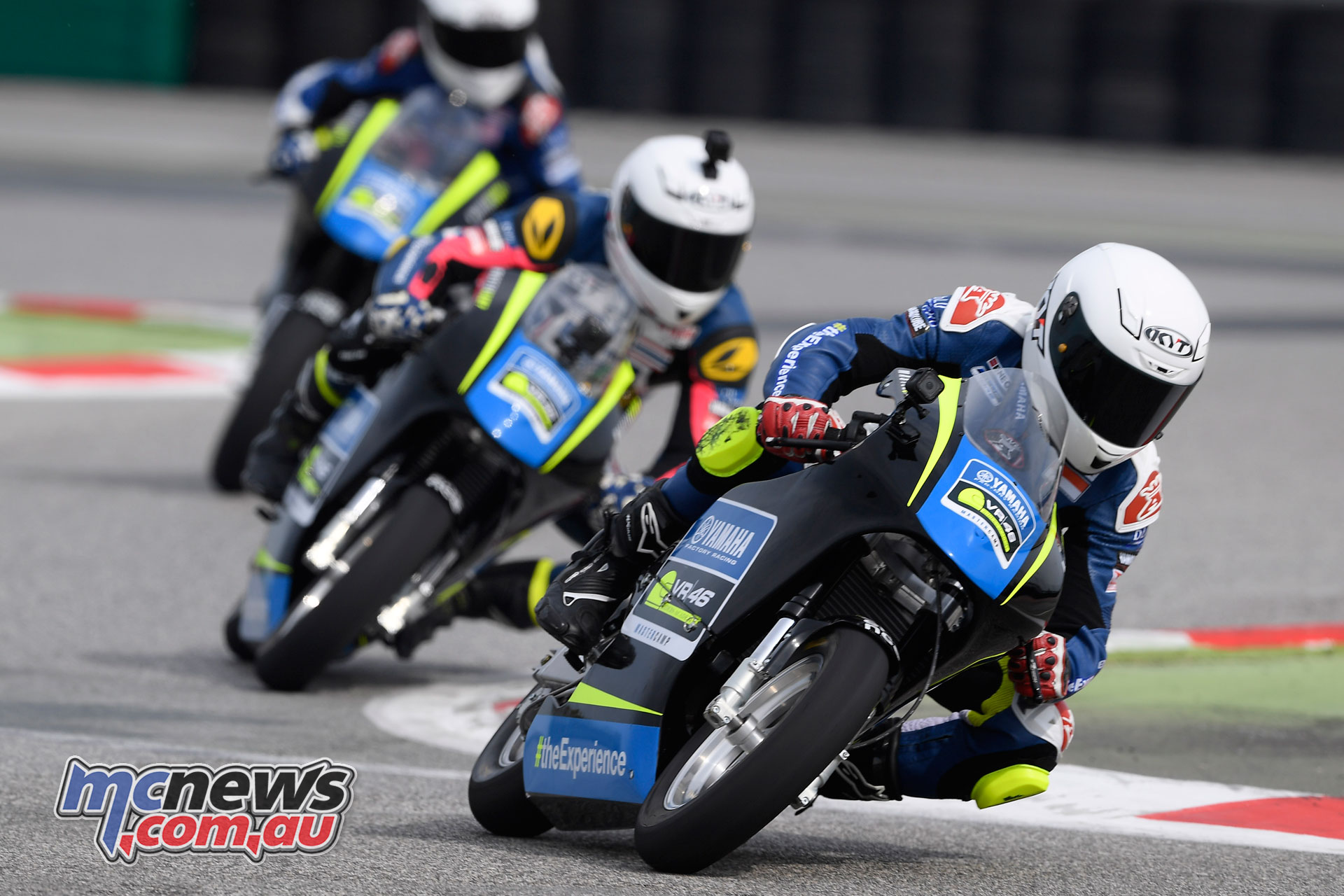Back to 2017 Suzuki GSX-R1000 Page One
Broad Power System – MotoGP technology
The GSX-R line has always been known for making broad power across the rev range, combining low-end and mid-range torque with an exciting top-end rush.
The new GSX-R1000 engine is designed to produce the most top-end power without sacrificing low-end and mid-range power and torque.
To achieve the engine design target of “Increasing top-end power without losing low-to-mid range output”, MotoGP derived technologies are built into the new GSX-R power plant, using the “Broad Power System”.
The combination of Suzuki Racing VVT (SR-VVT), Suzuki Racing Finger follower valve train, Suzuki Exhaust Tuning-Alpha (SET-A) and Suzuki Top Feed Injector (S-TFI) systems form the Broad Power System designed to increase high-rpm performance and top speed without detracting from lower-rpm and mid-range performance. The result is strong, linear power and enhanced acceleration throughout the rpm range.
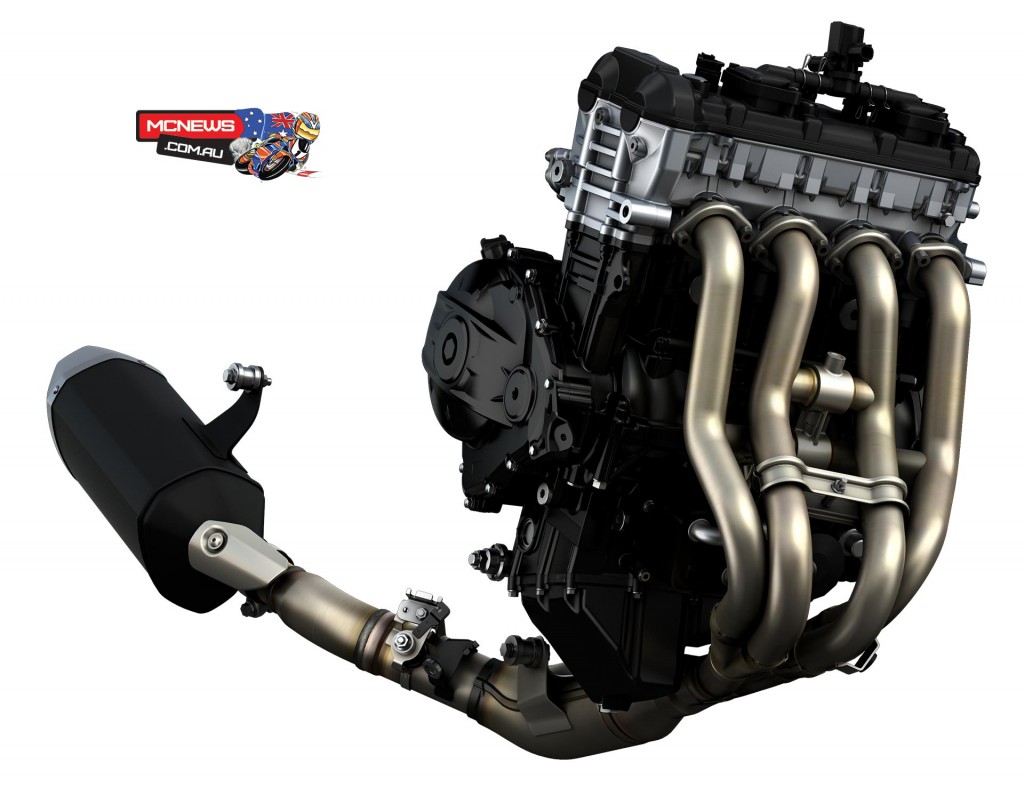
Suzuki GSX-R1000 Engine Design Concept
- Suzuki Racing Finger follower
- (Valve train) system Suzuki Racing
- VVT (Variable Valve Timing) System
- Suzuki Top-feed Injector (Electronic throttle body)
- Suzuki Exhaust Tuning Alpha (Exhaust balance pipe valves)
- Broad Power System
Suzuki Racing VVT (Variable Valve Timing System)
Steel balls are positioned in grooves in the intake cam sprocket and adjacent guide plate. Moved outward by centrifugal force, they stack in different grooves in low and high rpm, rotate the intake cam at high rpm, retarding intake cam timing. Intake cam timing is thus optimized for both high-rpm and low and mid-rpm ranges; extra top-end power is added, without losing low-to-mid range output.
Suzuki Racing Finger Follower Valve Train
New GSX-R1000 valve train system changed from previous model’s bucket-tappet system to finger follower rocker arm type to improve valve control and allow higher rpm. The reduced moving mass also allows increased valve lift and higher peak rpm, increasing peak output. Valve response and control is also improved throughout the rev range.
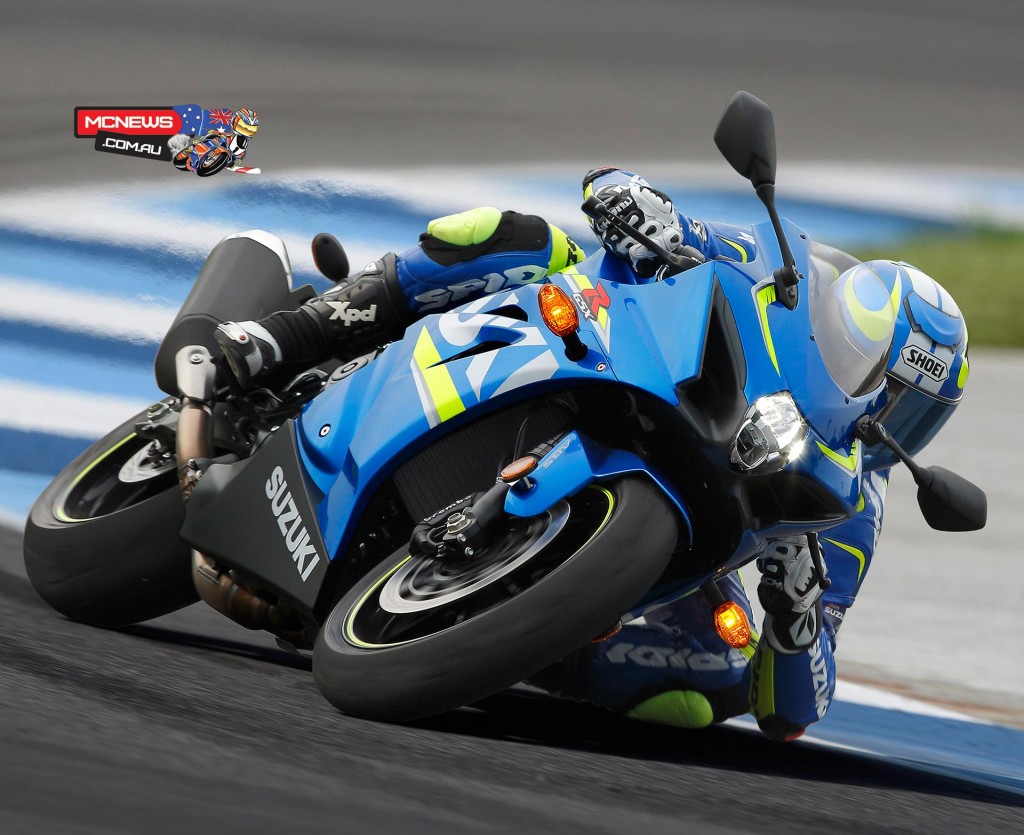
Suzuki Top Feed Injector (S-TFI)
Secondary injectors located in the top of the air box operate at higher rpm and deliver finely atomized fuel to the combustion chamber. The dual-injector design produces greater top end power without detracting from low-mid rpm range output.
Suzuki Exhaust Tuning-Alpha (SET-A)
Suzuki engineers added two servo-operated SET-A butterfly valves, one in each header balance tube. The SET-A valve in each header balance tube remains closed to enhance lower-rpm and mid-range power, then opens to add significant power at higher
rpm.
Suzuki Drive Mode Selector (S-DMS)
The Suzuki Drive Mode Selector (S-DMS) allows selection of one of three engine power delivery settings to suit the rider’s personal preferences in various riding situations, such as different racetracks or tight, twisty roads.
The rider can select three different power modes by using a switch on the left handlebar. Three different fuel maps are pre-set in the ECM, delivering three different engine characteristics. The rider can select the power mode based on personal preference or riding conditions. Together with the 10-level traction control, S-DMS offers a variety of choices.
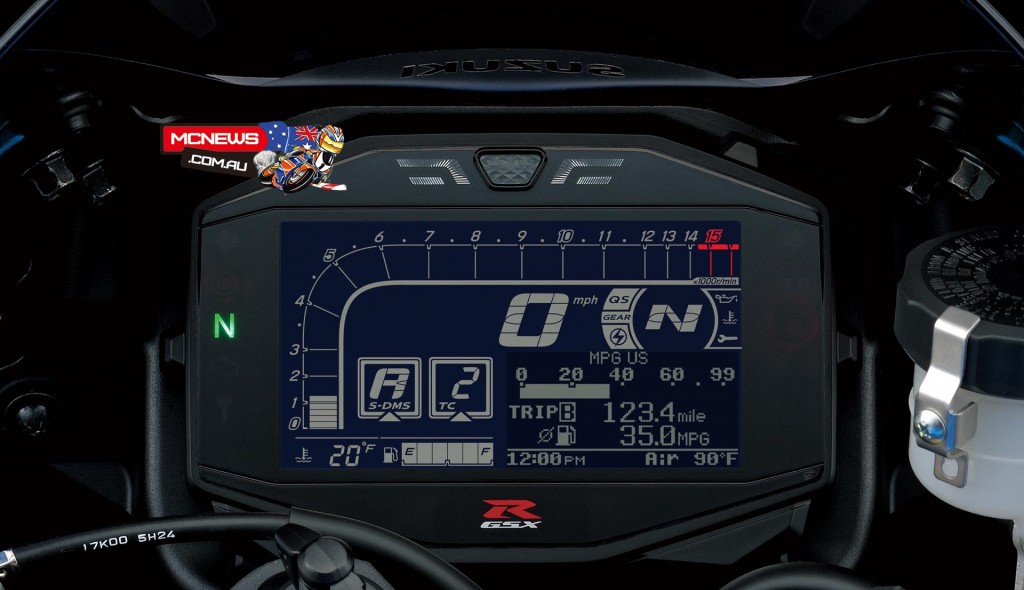
10-level Traction Control System
The new GSX-R1000 features Suzuki’s advanced traction control system, allowing the rider to select three different power modes and 10 different levels of traction control, depending upon road or racetrack grip conditions as well as personal preference and experience level. The power mode and level of TC intervention can be changed while riding, as long as the throttle is closed.
Quick Shift System
The GSX-R1000 also has a new racing-type quick shift system. The quick shift system allows the rider to upshift and downshift, without using the clutch. The system automatically interrupts power just long enough—between 50 and 75 milliseconds, depending upon the sensitivity adjustment – to unload the transmission gear dogs and allow a clean upshift at full throttle, producing almost uninterrupted acceleration. For quicker and smoother downshifts without blipping the throttle grip or using the clutch, the system automatically opens the throttle valves just enough to increase rpm and match engine speed to the lower gear ratio.
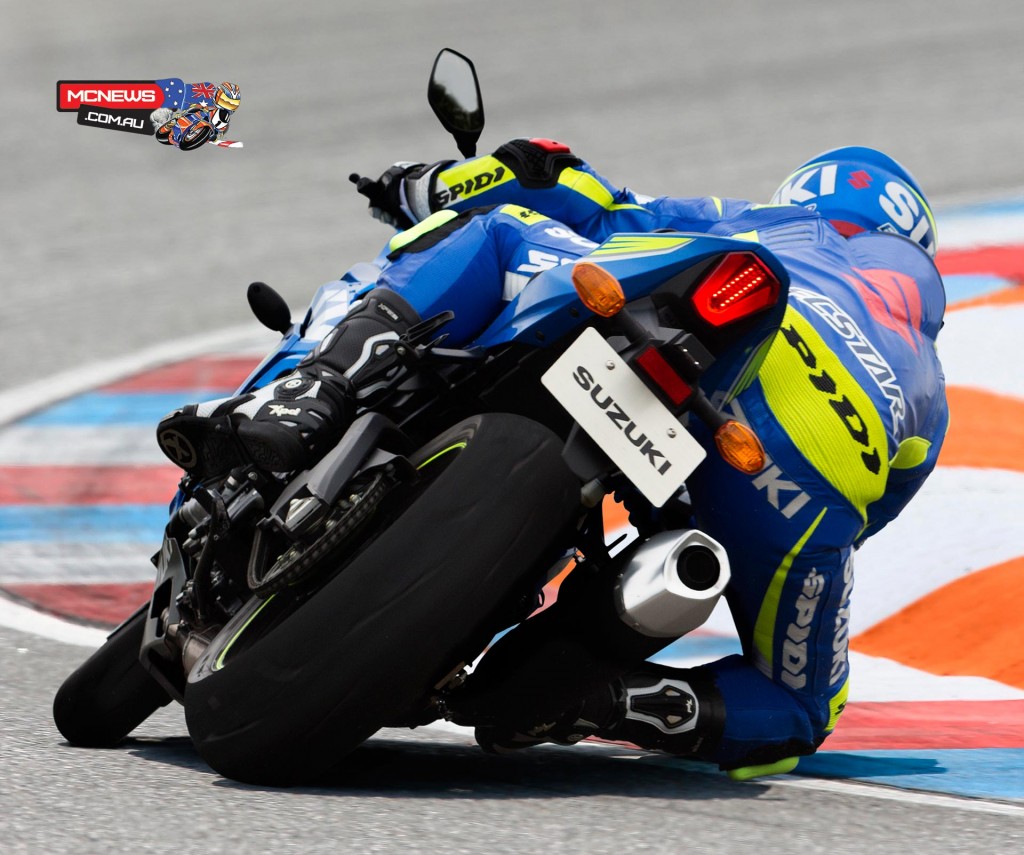
Launch Control system
The launch control system makes it easier for a racer to get a good start in closed-course competition by automatically limiting engine rpm and optimizing torque delivery while the rider holds the throttle twist grip wide open and concentrates on feeding in the clutch lever.





